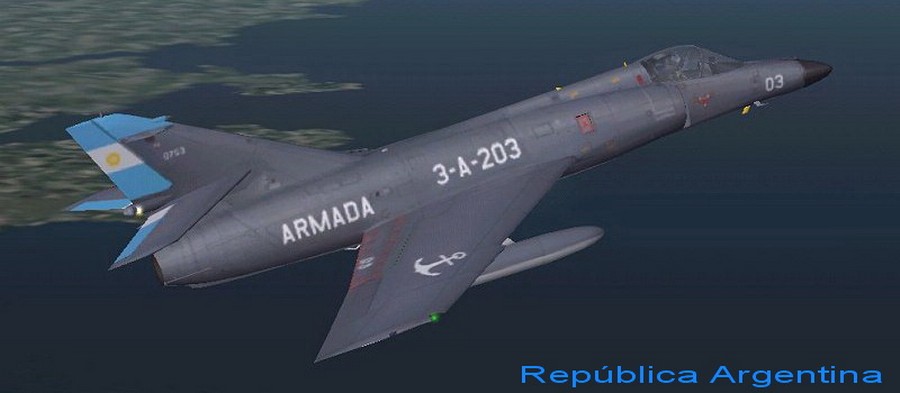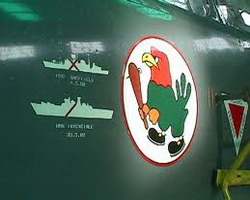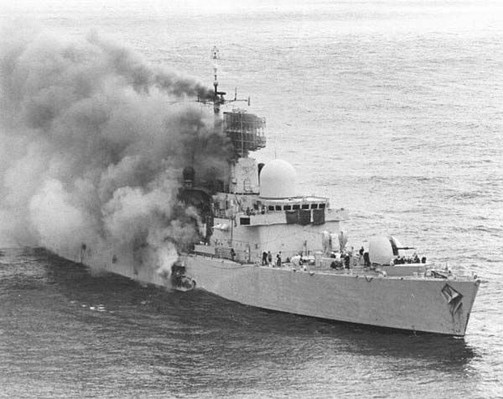Super Etendard - Machtres Fighters
Main menu
- index
- Air Services
-
Planes
- list
- Weapons
- Gallery
- transport
- liners
- X projects
- Air Forces
- Air Disasters
- red-bull
- Specials
- Choppers
- History
- Aircraft Carriers
-
Information
- Argentine
- Space
Super Etendard
The Dassault-
Design and development
The Super Étendard is a development of the earlier Étendard IVM that was originally to have been replaced by a navalised version of the SEPECAT Jaguar (the Jaguar M), until this plan was stalled by political problems, together with problems with operating the Jaguar aboard ships, including the inability to land back on a carrier after an engine failure. Instead, Dassault proposed an improved version of the Étendard IVM, with a more powerful engine, a new wing and improved avionics. This proposal was accepted by the French Navy in 1973 as the Super Étendard.
The Super Étendard is a small, single-
The first of three prototypes, a IVM modified with the new engine and some of the new avionics, made its maiden flight on 28 October 1974. The French Navy initially ordered 60 of the new model, with options for a further 20, but budget cuts lead to only 71 being purchased in the end, with deliveries starting in June 1978, while the Argentinian Navy ordered a further 14. Production was completed in 1983.

Operational history
Argentina The Argentine Naval Aviation decided to buy 14 Super Étendards in 1980, after the United States put an arms embargo in place-
The Argentine Naval Aviation decided to buy 14 Super Étendards in 1980, after the United States put an arms embargo in place-
The fifth missile was launched in an attack intended to strike against the British aircraft carrier HMS Invincible. (A sixth Exocet, which was fired from an improvised land based launcher failed to acquire a target, but the seventh missile hit and the warhead  detonated causing casualties and damage to HMS Glamorgan. This launcher was designed by Argentine technicians.)
detonated causing casualties and damage to HMS Glamorgan. This launcher was designed by Argentine technicians.)
Once the conflict was over, Super Etendards performed qualifications on aircraft carrier ARA 25 de Mayo until the ship's final retirement From 2001, qualifications are made on Brazilian Navy carrier São Paulo and/or touch- Gringo-
Gringo-
As of 2010, Argentine Super Étendards are still in service and French cooperation to upgrade the aircraft was announced.
France
Deliveries of the Super Étendard to the French Navy started in 1978, with the first squadron, Flotille 11F becoming operational in February 1979. In total, three operational squadrons and a training unit were equipped with the Super Étendard.
The first operational missions took place in Lebanon during Operation Olifant. On 22 September 1983, French Navy Super Étendards operating from the aircraft carrier Foch bombed and destroyed Syrian forces positions after a few artillery rounds were fired at the French peace keepers. On 17 November 1983, the same airplanes attacked and destroyed a Hizbollah training camp in Baalbeck after a terrorist attack on French paratroopers in Beirut.
France's Super Étendards were modified to carry the ramjet powered Air-
Operation Héraclès starting 21 November 2001 saw the deployment of the Charles de Gaulle and its Super Étendard in Afghanistan. Operation Anaconda, starting on 2 March 2002 saw extensive use of the Super Étendard in support of French and allied ground troops. Super Étendard's returned to operations over Afghanistan in 2007 and 2008. One of their main roles was to carry laser designation pods to illuminate targets for Dassault Rafales.
All Super Étendards are expected to be retired from French service by 2015, to be replaced from 2006 onwards with Dassault's Rafale M.
Iraq
Five Super Étendards were loaned to Iraq in 1983 while the country waited for deliveries of Agave equipped Dassault Mirage F1s capable of launching Exocet missiles that had been ordered, arriving in Iraq on 8 October 1983. These aircraft used Exocets with some success against shipping (particularly tankers) sailing to and from Iranian ports, 51 attacks in total in the Persian Gulf before being returned to France in 1985. At least two were shot down during the spring and summer of 1984 by Iranian F-
Operators
Argentina
Argentine Naval Aviation received 14 aircraft, eleven are still in service.
France
Aviation Navale received 71 aircraft, all are to be replaced by the Rafale M.
Iraq
Iraqi Air Force was lent five French aircraft between 1983 and 1985. Only three returned.
Crew: 1
Length: 14.31 m (45 ft 11½ in)
Wingspan: 9.60 m (31 ft 6 in)
Height: 3.86 m (12 ft 8 in)
Wing area: 28.4 m² (306.7 ft²)
Empty weight: 6,500 kg (14,330 lb)
Max takeoff weight: 12,000 kg (26,455 lb)
Powerplant: 1× SNECMA Atar 8K-
Performance
Maximum speed: 1,180 km/h (637 knots, 733 mph) at low level
Range: 1,820 km (983 nmi, 1,130 mi)
Combat radius: 850 km (460 nmi, 530 mi) with one AM39 Exocet missile one wing pylon and one drop tank on opposite pylon, hi-
Service ceiling: 13,700 m (44,900 ft)
Rate of climb: 100 m/s (19,700 ft/min)
Wing loading: 423 kg/m² (86.3 lb/ft²)
Thrust/weight: 0.42
Armament
Guns: 2× 30 mm (1.18 in) DEFA 552 cannons with 125 rounds per gun
Hardpoints: 4× underwing and 2× under-
Rockets: 4× Matra rocket pods with 18× SNEB 68 mm rockets each
Missiles:
1× AM-
1× Air-
2× AS-
2× Matra Magic Air-
Bombs: